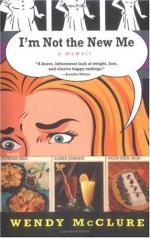When the potter’s daughter of remote antiquity first drew the incised line around her lover’s shadow cast upon the wall by the accomplice sun, art had its birth. Before that time primitive man had endeavored—with who knows what desire to leave behind him some trace of his passage upon earth—to make upon bones rude tracings of his surroundings. The proof of the universality of art is in these manifestations, of which the logical outcome was the complete and splendid art of Greece. Through the sequence of Byzantine art we come to Giotto, who, a shepherd’s son under the skies of Italy, was reinspired at the source of nature, and became the first painter as we to-day know painting. From Giotto descends in direct line the great family of artists who, in the service of the spiritual and temporal sovereigns of the earth, shed illustration upon their craft and undying lustre on their names until the old order, changing, giving way to the new, enfranchised art in the great upheaval of the latter part of the eighteenth century.
It is well, in order to understand the position in which this great revolution left art, to briefly consider the conditions preceding it. Painting, up to the end of the seventeenth century, had been essentially the handmaiden of religion; and religion in its turn had been so closely allied to the state that, when declining faith let down the barriers, art took for the first time its place among the liberal professions whose first duty is to find in the necessities of mankind a reason for their existence. Small wonder, then, that, accustomed to be fostered and encouraged, to be held aloof from the material necessity of earning their daily bread, the artists of this period sought protection from the only class which in those days had the leisure to appreciate or the fortune to encourage them. The people, the “general public,” as we say to-day, did not exist, except as a mass of patient workers in the first part, as a clamorous rabble demanding its rights in the latter part, of the century. Hence the patronage of art, its very existence, depended on the pleasure of the nobility, and naturally enough its themes were measured according to the tastes of its patrons. Much that was charming was produced, but never before did art portray its epoch with such great limitations. The persistent blindness to the signs and portents gathering thick about them which characterized the higher classes of the time, may be felt in its art; of the great outside world, of the hungry masses so soon to rise in rebellion, nothing is seen. One may walk through the palaces at Versailles, may search through the pictures of the epoch in the Louvre, or linger at Sans Souci in Potsdam—where Frederick filled his house with sculptured duchesses in classical costume playing at Diana, and covered his walls with Watteaus and his ceilings with decorations by Pesne, a less worthy Frenchman—and remain in complete ignorance of hungry Jacques, who, with pike-staff and guillotine, was so soon to change all that and usher in the period of the Revolution, Before the evil day dawned for the gilded gentry of France, however, the British colonies in America, influenced by the teachings of the precursors of the French Revolution, and aided by their isolation, were to establish their independence.




